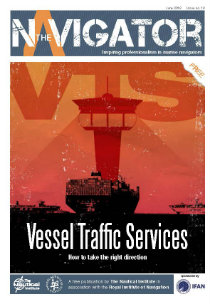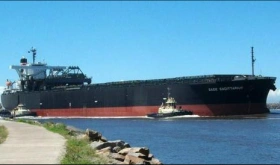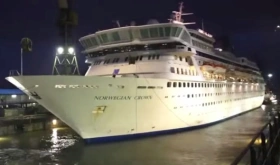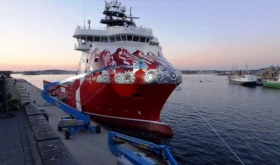MV Friendship was a Maltese Flag General Cargo Ship which was carrying cargo from Cuba to Canada. The vessel was targeted for inspection as it was identified by THETIS as a Priority I for a more detailed inspection in Halifax, Nova Scotia. Canada. The ship was discharging a cargo of Nickel in bags. A team of 3 inspectors from Dartmouth office boarded the ship on July 23, 2011. The vessel was detained on July 25, 2011 for a total of 23 deficiencies of which 6 were serious enough to detain the vessel.
The deficiencies leading to detention were,
- Life Saving Equipment. Life Boat took an hour and thirty minutes to be lowered to the water level. The life boat falls could not be disengaged from the life boat falls and had to be hammered to free the hooks.
- Embarkation ladder to the life boat was too long even when the ship was in light condition and had to be “lashed off” before use.
- The Plimsoll Load Line markings had the initials CS even when the ship was with GL for the last 4 years.
- Various ventilators and air pipes on deck had dampers and covers seized and inoperable.
- Escape hatches from steering compartments locking mechanism was seized.
The overall maintenance of the ship was in deplorable even though the ship had valid Safety Management System Certificate.
A lot of deficiencies became evident during the check of overall condition of the ship, some of them are highlighted below:
- The vessel’s documents claim that the ship was built in 2007, but it appeared to be much older raising questions on whether it was re-built following an accident, or hijacked and given a false identity.
- Load Line marking said CS, even though the ship has been with GL for 4 years.
- Draft marks barely legible.
- Storage of what was claimed to be cylinder oil.
- Steering Gear compartment Escape hatch. Dog-operating mechanism was seized, and the hatch was held shut by a length of rope tied to the ladder!
- Air-vent hand-wheels seized. Oil “Save-Alls” had plugs which could not be screwed in, due to corrosion of the threads.
- All Sounding-pipe threads heavily corroded; plugs held in place only by gravity.
- Oil barrel not secured on main deck.
- Fire door gaskets worn out and not effective.
- Lifeboat boarding ladder too long, even at light draft, requiring crew to “tie it off” before use.
- Lifeboat gripe fouled on lifeboat lifting hook as the boat was lowered, necessitating re-hoisting of the boat to release gripe.
- The lifeboat compasses were installed such that it was impossible to read the compass card from the conning position.
- Lifeboat fender crushed, fibre-glass damaged, by over-tightening of gripes.
- Improper stowage of lifeboat stores.
- Maker’s plate in lifeboat showing that it was manufactured in 2006-10. The plate was made in 2006, but the lifeboat was many years older.
- Lifeboat release hooks poorly maintained, corroded internally. Clear evidence of the company’s failure to comply with ISM s. 10.1 and s. 12.1.
- Stores Crane hook; safety clip missing. Clear evidence of a lack of compliance with ISM 12.1.
- Lifeboat searchlight (P & S) not working; wiring defective. Clear evidence of failure to comply with ISM 10.1 and 12.1.
It should be noted that this ship had its SMC re-issued by an IACS member, when even a casual inspection of the documentation revealed that the SMC simply did not exist! The Master had no knowledge of the SMC, and could not locate documents, hereby providing clear evidence of a failure to comply with ISM s 12.
The vessel was released from detention on July 29, 2011 after all deficiencies were rectified and the vessel was audited by the ship’s classification society before departure. The classification society was also requested to audit the company’s head office and a copy of the audit to be sent to Transport Canada. The vessel departed Halifax for Come-by-Chance in New Foundland to load a cargo of Phosphorus destination Colombia.
Source: Paris MoU
































Good catch by Transport Canada, there can be not place to hide for substandard shipping.